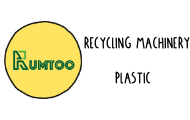Millions of tons of plastic waste are dumped into landfills and oceans every year, wreaking havoc on marine life and ecosystems. Recycling has been touted as a stop-gap solution for this non-biodegradable waste, but how effective is it, really? Does it help balance things out? Or do we need to rethink our approach?
The Reality of Recycling Plastic
While recycling is often hailed as the solution, the reality is far more complicated and full of challenges. The process involves not only waste collection but also careful sorting, processing, and market demand for recycled materials. Factors influencing the success or failure of recycling include participation rates, technical processes, and contamination levels.
Economic Viability Issues
Despite the growth in recycling infrastructure, only about 9% of all plastic products are recycled globally. The remaining 81% ends up in landfills or our environment. The main reasons include:
- High Costs: Recycling is often more expensive than manufacturing new plastics.
- Market Demand: “Virgin” plastics are cheaper and more accessible.
- Fragmented Systems: A lack of standardized systems and regulations globally.
- Public Apathy: Many people either misunderstand recycling or don’t participate.
Global Case Studies: Wins and Losses
Examining different recycling approaches around the world provides insight into their successes and limitations.
- Japan’s Model: Japan has one of the world’s highest recycling rates, achieved through a comprehensive waste-management system that encourages sorting at the source. Government-backed education and stringent regulations foster a culture where recycling is a civic duty.
- The U.S.: A Fragmented System: In the U.S., inconsistent programs across states have led to public confusion, high contamination rates, and low effectiveness. Reliance on volatile global markets has further complicated the process.
- Europe: Producer Responsibility: Europe emphasizes extended producer responsibility (EPR), holding manufacturers accountable for product disposal. Legislative frameworks, technological innovations like AI sorting, and widespread public awareness have made Europe a leader in sustainable packaging.
Rethinking Plastic Recycling: Alternatives and Innovations
While recycling remains essential, it’s clear that more comprehensive solutions are required.
- Reduction Plans: Reducing plastic dependency by encouraging reusable products, using sustainable alternatives like glass or metal, and designing products with less plastic.
- Biodegradable Plastics: New biodegradable plastics are designed to decompose naturally, like Polyzme Tech’s enzyme technology that breaks down polyethylene into harmless components.
- Reuse Systems: Refill stations, deposit-return schemes, and upcycling promote the reuse of plastics and foster a circular economy mindset.
- Corporate Policies: Companies must invest in sustainable design and production, supported by government policies rewarding these efforts.
Technological Advancements in Recycling
- Chemical Recycling: Breaks down polymers into their original monomers, making them suitable for reuse in high-quality plastics.
- AI and Robotics: Advanced sorting systems powered by AI and machine learning improve the accuracy and speed of identifying recyclable plastics.
- Enzymatic Breakdown: Companies like Carbios use enzymes specifically designed to degrade plastics into their basic components for efficient recycling.
- Blockchain Traceability: Blockchain improves the traceability of recyclable materials, building consumer trust and streamlining regulatory compliance.
Policy and Cultural Shifts Needed
- Government Policies: Extended producer responsibility (EPR), subsidies for recycling infrastructure, and penalties for waste can improve recycling rates.
- Cultural Shifts: Educating the public about proper recycling practices, clear labeling, and local initiatives will reduce contamination.
خاتمة
The recycling of plastics is essential but cannot be the sole solution. We need a comprehensive approach that combines biodegradable polymers, reuse networks, government policies, and corporate accountability. It’s a long and arduous journey, but with collective effort, technological innovation, and cultural change, we can craft a sustainable future for plastic waste management.
لا يسمح بالاستنساخ دون إذن.:ماكينات رومتو » إعادة تدوير البلاستيك: هل هي فعالة وهل نفعل ما يكفي؟

 ماكينات رومتو
ماكينات رومتو مطلوب الان
مطلوب الان 